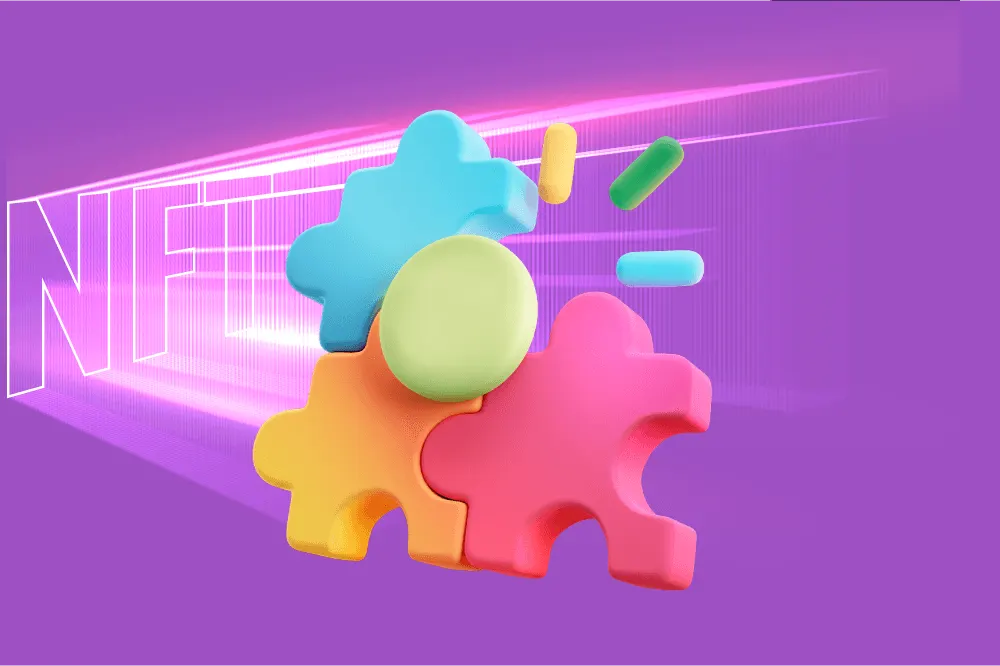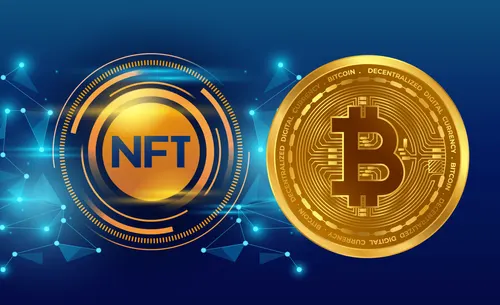Our partner, XM, lets you access a free demo account to apply your knowledge.
No hidden costs, no tricks.

Everyone wants to own an NFT nowadays. At this point, it has become a trend to invest in them. Some do this with the hope of reselling them later, some buy them just to brag about it, and some buy them because it holds some sentimental meaning.
Because of this, floor prices of more famous and desired NFT pieces have skyrocketed and don’t show signs of slowing down. For that reason, early investors and NFT flippers have seen huge gains, while those who want to join now can’t afford these NFTs or are paying astronomical prices to own one.
"A complex system that works is invariably found to have evolved from a simple system that worked. So in that sense, NFTs are primitive, and people are going to recombine, and assemble, and compose those primitives to create incredible complex systems." - Naval
To combat these high prices people developed fractional NFTs. Follow our guide to find out everything you need to know about them.
To put it in simple terms, a fractional NFT is just one NFT divided into multiple pieces. This allows multiple people to own a portion of one NFT. This is not an uncommon style of investing. For example, when someone is buying a sports team, it is a common practice to gather multiple investors who put in some amount of money and receive partial ownership of the team.
These NFTs are the same, we can buy a small portion of them and share the ownership with other investors. But this does not mean that you own a dedicated portion of the NFT. Let's say the NFT is a painting of a person and by having partial ownership, it does not mean that you own the face part of the NFT and someone else owns the arms. You just have a partial right to it.

When creating an NFT on the Ethereum blockchain, ERC-721d is the most common standard used. On the other hand, ERC-20 is used when it comes to creating altcoins and other tokens. ERC-721 creates a non-fungible token and ERC-20 is used to create the fungible token.
Using a smart contract we are then able to link a fungible token generated by the ERC-20 to an NFT created using the ERC-721. With this contract, anyone holding a fungible token has partial ownership of an NFT to which this token is linked.
Think of them as shares. Anyone holding a share of the company owns a percentage of it. These fractional NFTs are the same, if you own a token that is linked to an NFT, you have some ownership rights, but unlike shares, you don’t receive dividends, but you might receive some benefits such as whitelisting.

The short answer is yes. It is possible to turn a fractional NFT back into a normal one, but it is a bit complicated. Normally smart contracts allow the fractional NFT owner to buy out all the fractions of an NFT from other investors and turn them into one whole NFT.
This process is done by the owner transferring some portion of the ERC-20 token into a smart contract. When this happens, buyout auctions will be started and run for a certain period of time. During this time, fraction owners can decide what to do. Take part in an auction and buy the NFT themselves or sell their portion of the NFT. If this process succeeds, all of the fractions are returned to a smart contract and the buyer receives ownership of the whole NFT, while the holders of other fractions receive money based on their portion of the share.

There are many benefits that come with fractional ownership. Let us take a look at the most beneficial aspects and why they are beneficial.
NFTs are notoriously illiquid, especially the expensive ones. As floor prices are rising for more desirable collections, fewer and fewer people can purchase those NFTs, and it can be a long and hard process if you are looking to sell your NFT.
With fractional NFTs, this problem gets resolved. When ownership is divided, people who want to join the project don’t have to buy the whole NFT and have the option to pay less and receive partial ownership. With this, the entry has become more accessible to the general public. So if you are looking to sell your portion of NFT it is easier to find a buyer for it, than for the whole NFT.
One of the biggest benefits NFTs have brought to artists and creators is that it has given them a new platform on which to showcase their work and get acknowledgments like on music NFT marketplaces. With fractional NFTs, this exposure has become even better. As more people are able to join the ecosystem of high-end NFTs, creators are now able to showcase their works to a wider range of audiences and increase their popularity.
High-end NFTs usually have crazy high floor prices, only the wealthy are able to join the projects, and people who don’t have tens of thousands of dollars to invest are shut out of these projects. But with fractionalization, these high entry prices are removed, and more people have the ability to invest in more desirable projects.
As we mentioned, the entry prices for more famous projects are really high, and it is not accessible to the big public. Because of this, some people started to come together and put up funds to buy one shared NFT.
These groups usually consist of friends or people close to each other, but there is a famous saying “Money and friends don’t mix together very well”. There is always a possibility that someone steals the NFT for themselves. But with Fractional NFTs this danger is removed as no one has access to the whole NFT.
Determining the price of an NFT is really hard. You can sell it for as much as someone is willing to pay. More expensive NFTs usually have small transaction histories which makes pricing them even harder.
But with Fractional NFT's great liquidity it is easier to price them, as they usually have big transaction histories and are linked to tokens.
When it comes to disadvantages, there is one that stands out, this is the buyout option that owners have. A person can trigger a buyout option to purchase all of the shares and own the whole NFT. When this happens, payment is given out to each part-owner according to how much of the NFT they own. But the problem is that, if you want to keep an NFT you have to outbid the person who triggered the buyout option, or you are forced to sell your share even though you don’t want to.
Our partner, XM, lets you access a free demo account to apply your knowledge.
No hidden costs, no tricks.
We fractionalize NFTs in order to make them more liquid and accessible to a bigger audience. With fractional NFTs people don’t have to invest crazy amounts of money to have the ability to own a fraction of an NFT. Because of this, entry becomes easier and more accessible to the general public.
If we want to fractionalize an NFT we need to link it to an ERC-20 token using a smart contract. This process can be hard for some people to do, especially if they are new to the NFT ecosystem and don’t know how smart contracts work. Luckily for us, there are different platforms that offer to do this process for us.
It comes down to how much you want to invest and if you are okay knowing that you are not the sole owner of an NFT. If this is okay for you, fractional NFT investment can be a good way of getting involved in the NFT market.